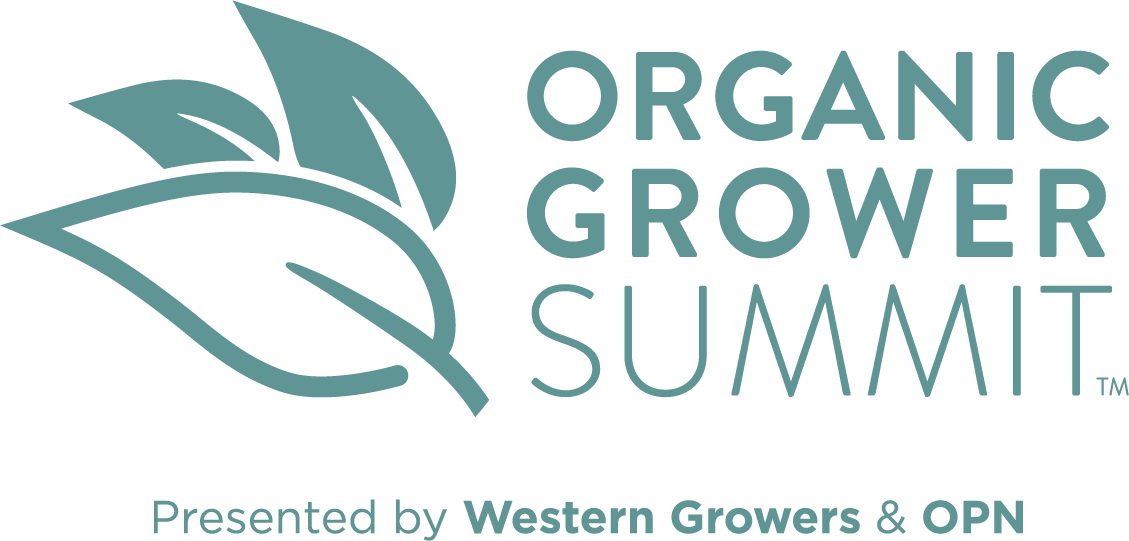News
Don't Panic About Organics
The overarching takeaway from the Organic Grower Summit ed session on the softening of consumer demand for the category is "don't panic." The past two-plus years have been extraordinarily challenging from every angle, resulting in trend lines that are not yet meaningful.
Speakers Tom Barnes, CEO of Category Partners, and Lonnie Gillespie, chief organic officer of Farm Fresh Direct, noted that while there was an unmistakable dip in the volume of organic produce in Q3 2022, it’s too early to call it a trend.
“Don’t panic,” said Gillespie.
While there has been a decline in 2022 sales for some organic commodities, Gillespie said there are many reasons that sales for some commodities this past year are below what they were in the pandemic year of 2020 as well as in 2021. To begin, fresh organic produce sales at retail got a tremendous boost in the pandemic frenzy of eating healthy meals in 2020. The pandemic continued in 2021, and sales of most items remained relatively high.
This past year, Gillespie said, has seen a “ton of pressure,” including overall inflation, rising truck rates, and labor struggles.
In turn, retailers are trying to find the right mix of products and the proper shelf space for each, Barnes said. In this environment, there will be some adjustments as consumers try to stretch their food dollars, but overall, he believes organic produce will do well.
“I think it could be hard for organics while the consumer is in their current mindset,” Barnes said. “We are not going to see the growth we’ve seen in the past.”
As the economy gets back to normal, he said consumers will return to their previous buying habits, which have put organic produce on a steady upward growth curve.
“Organics can be one-fourth of all produce sales,” he predicted, adding that he would not advise any marketer to decrease their offerings. “Hold is the right strategy.”
The organic sector saw Q3 2022 sales grow year over year by 4.1 percent to $2.4 billion and achieved 12 percent produce department dollar market share. Volume declined by 4.5 percent year over year, and there was also a 2 percent decline in the number of retail outlets offering an organic option.
The decline in stores carrying organics is perplexing and concerning, Gillespie said. “The last thing you want to see is organics not being offered,” she said. “We don’t want to lose shelf space as it is very hard to get it back.”
In his 15 years of watching and studying the organic category, Barnes said last quarter was the first time he has seen the distribution number drop. He said the industry needs to stop that in its tracks as he does not want to see a “snowball rolling down hill effect” with that trend gaining speed.
Barnes also said that organic growth has been strong for so long that a small decline in these difficult economic times shouldn’t be overly worrisome. In fact, he pointed to the rise in organic dollar sales as the likely cause of the organic volume decline since it makes sense that as some people struggle economically and prices rise, they will shy away from higher-priced items like organics. Barnes called this group of consumers “fence sitters” as their organic produce purchases tend to be determined by price.
The pair of speakers continued to hammer home the point that the decline in volume for Q3 does not have to be anything more than a blip in the continued progress organics have enjoyed for the past two decades.
Barnes noted that there have been three very unusual years back to back, indicating that 2023 will surely have a sense of normalcy to it. At the same time, he said predicting what will happen in 2023 is clearly difficult. “The margin for error is crazy,” he quipped.
Gillespie noted that while there have been short-term declines in organic numbers, “we haven’t lost what we gained in 2020.”
Turning to the price differential between organic and conventional potatoes, Gillespie said it must remain robust. “You can’t produce organic potatoes for the same price,” she said. “You have to get a higher price. It has to be more, or it’s just not doable and sustainable for growers.”
Barnes noted that overall, the gap between conventional and organic fresh produce pricing has gotten smaller, saying that in 2018, organic produce as a category had an 110 percent price premium over conventional. In 2022, that premium shrunk to about 90 percent. “Is that the right place?” he asked.
While Gillespie is not anxious to see a continuation in the gap reduction, she did say that as farming practices improve, it makes sense that the gap will decline for some commodities.
In a response to a question from Barnes about "greed inflation," Gillespie said any belief that produce prices are going up because growers are taking advantage of the overall rise in prices is offensive. When it comes to organic potatoes, for example, yields are less, and inputs cost more. And this year, the cost of all inputs has increased significantly. “Inputs are so high, and they keep going up,” she said.
Looking ahead, Gillespie believes organic potatoes could command a market share of as much as 10 percent, up from their current perch of only 4 percent.
When Barnes indicated this market share is lower than many commodities, Gillespie pointed out that the jump from 4 to 10 percent would be quite impressive—and achievable.
In fact, she advised growers not to have a knee-jerk reaction to the current decline. From her perspective, there is still very good demand for organic potatoes, with room for growth.
